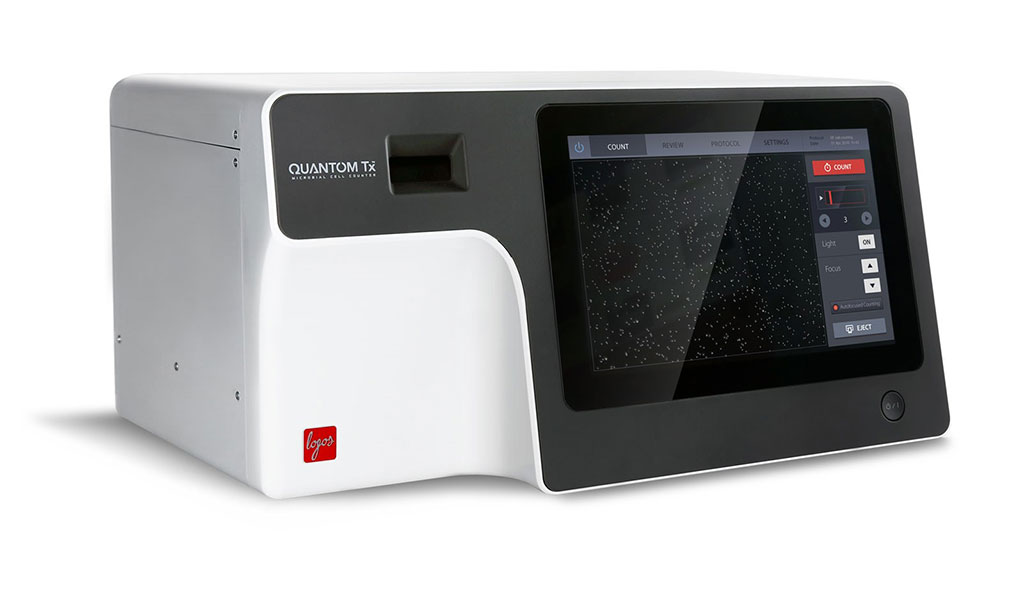Automated Fluorescent Microbial Cell Counter Detects Urinary Tract Infection
By LabMedica International staff writers
Posted on 15 Jul 2020
Urinary tract infections (UTI) accounted for around 400,000 hospitalizations, resulting in an estimated cost burden of approximately USD 2.8 billion in the USA. Between 50% and 60% of adult women will have at least one UTI in their life, and close to 10% of postmenopausal women indicate that they had a UTI in the previous year.Posted on 15 Jul 2020
A rapid urinalysis is usually conducted upon presentation with UTI‐related symptoms in patients. A rapid urinalysis screens the urine for ketones, proteins, reducing substances, red blood cells (RBC), white blood cells (WBC), nitrites, and pH levels outside the normal range (4.5 to 8.0). The most common pathogen associated with UTI globally is Escherichia coli.

Image: The QUANTOM Tx Microbial Cell Counter is an image-based, automated cell counter that can identify and count individual bacterial cells in minutes (Photo courtesy of Logos Biosystems).
Gastroenterologists and their associates at the Sinai Hospital (Baltimore, MD, USA) obtained clean‐catch urine samples from 10 healthy control subjects with a negative urinalysis result and 11 subjects with suspected UTI with a positive urinalysis and culture result for E. coli. Urine samples that received a positive result were plated onto blood agar and MacConkey medium for growth analysis. Urine samples were analyzed using the QUANTOM Tx Microbial Cell Counter (Logos Biosystems, Annandale, VA, USA) upon reception from the microbiology laboratory.
The scientists reported that the mean cellular concentration for the 11 E. coli‐positive samples was 1.01 × 108 cells/mL (range = 2.5 × 107–3.29 × 108 ± SD = 8.9 × 107). The average cellular concentration for the 10 control samples was 2.35 × 106 cells/mL (range = 9.42 × 105–5.93 × 106 ± SD = 1.56 × 106). The difference in cellular concentration between the E. coli‐positive and control groups was found to be statistically significant.
The authors concluded that the automated microbial cell counter represents a significant step toward high throughput, reproducible microbial cell observation, and quantification. A significant difference in cellular concentration was observed between E. coli‐positive UTI samples and controls measured with an automated microbial cell counter. Thus, automated microbial cell counters may serve important roles as preliminary screening tools in clinical diagnostic settings. The study was published on July 4, 2020 in the Journal of Clinical Laboratory Analysis.
Related Links:
Sinai Hospital
Logos Biosystems














